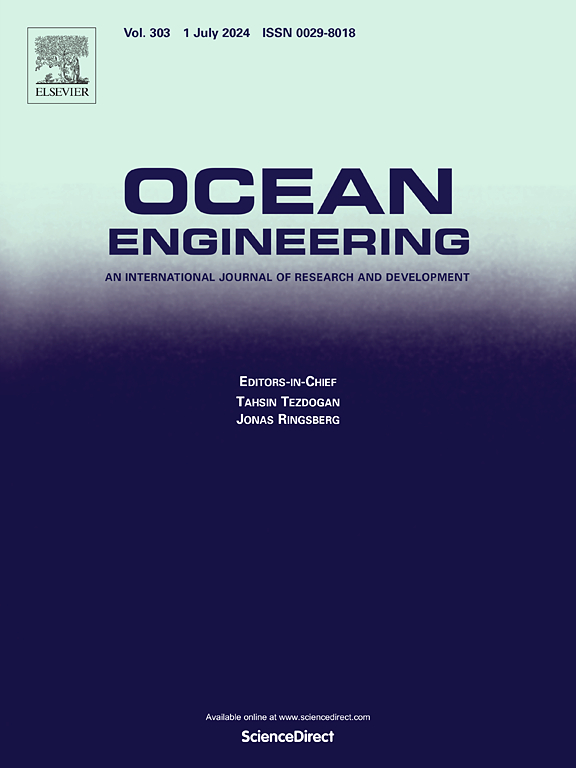Hybrid underwater imaging for the tri-dimensional inspection of critical structural elements in offshore platforms
IF 4.6
2区 工程技术
Q1 ENGINEERING, CIVIL
引用次数: 0
Abstract
Offshore wind farms face harsh maritime conditions, prompting the use of sacrificial anodes to prevent rapid structural degradation. Regular maintenance and replacement of these elements are vital to ensure ongoing corrosion protection, maintain structural integrity, and optimize efficiency. This article details the design and validation of the MARESye hybrid underwater imaging system, capable of retrieving heterogeneous tri-dimensional information with millimetric precision for the close-range inspection of submerged critical structures. The optical prowess of the system is first validated during low turbidity trials where the volumetric properties of a decommissioned anode are reconstructed with absolute errors down to 0.0008 m, and its spatial dimensions are depicted with sub-millimeter precision accounting for relative errors as low as 0.31%. MARESye is later equipped as payload in a commercial ROV during a real environment inspection mission at the ATLANTIS Coastal Test Center. This experiment sees the sensor provide live reconstructions of a sacrificial anode, revealing a biofouling layer of approximately 0.0130 m thickness. The assessment of the high-fidelity 2D/3D information obtained from the MARESye sensor demonstrates its potential to enhance the situational awareness of underwater vehicles, fostering reliable O&M procedures.
用于海上平台关键结构件三维检测的混合水下成像技术
海上风电场面临着恶劣的海洋条件,因此需要使用牺牲阳极来防止结构快速退化。定期维护和更换这些元件对于确保持续的腐蚀保护、保持结构完整性和优化效率至关重要。本文详细介绍了 MARESye 混合水下成像系统的设计和验证,该系统能够以毫米级精度检索异构三维信息,用于水下关键结构的近距离检测。该系统的光学性能首先在低浊度试验中得到验证,在低浊度试验中,对退役阳极的体积特性进行了重建,绝对误差低至 0.0008 米,对其空间尺寸的描述精度达到亚毫米级,相对误差低至 0.31%。在 ATLANTIS 海岸测试中心进行的实际环境检测任务中,MARESye 后来被作为有效载荷装备到商用遥控潜水器上。在这次实验中,传感器对牺牲阳极进行了实时重建,揭示了厚度约为 0.0130 米的生物污损层。对 MARESye 传感器获得的高保真 2D/3D 信息进行的评估表明,该传感器具有提高水下航行器态势感知能力、促进可靠的运行和维护程序的潜力。
本文章由计算机程序翻译,如有差异,请以英文原文为准。
求助全文
约1分钟内获得全文
求助全文
来源期刊

Ocean Engineering
工程技术-工程:大洋
CiteScore
7.30
自引率
34.00%
发文量
2379
审稿时长
8.1 months
期刊介绍:
Ocean Engineering provides a medium for the publication of original research and development work in the field of ocean engineering. Ocean Engineering seeks papers in the following topics.
 求助内容:
求助内容: 应助结果提醒方式:
应助结果提醒方式:


